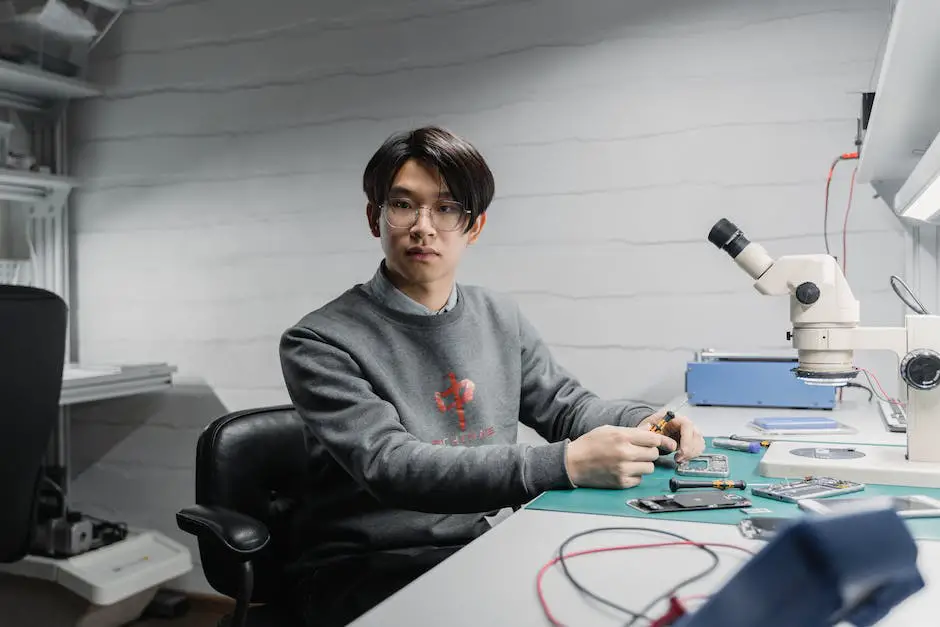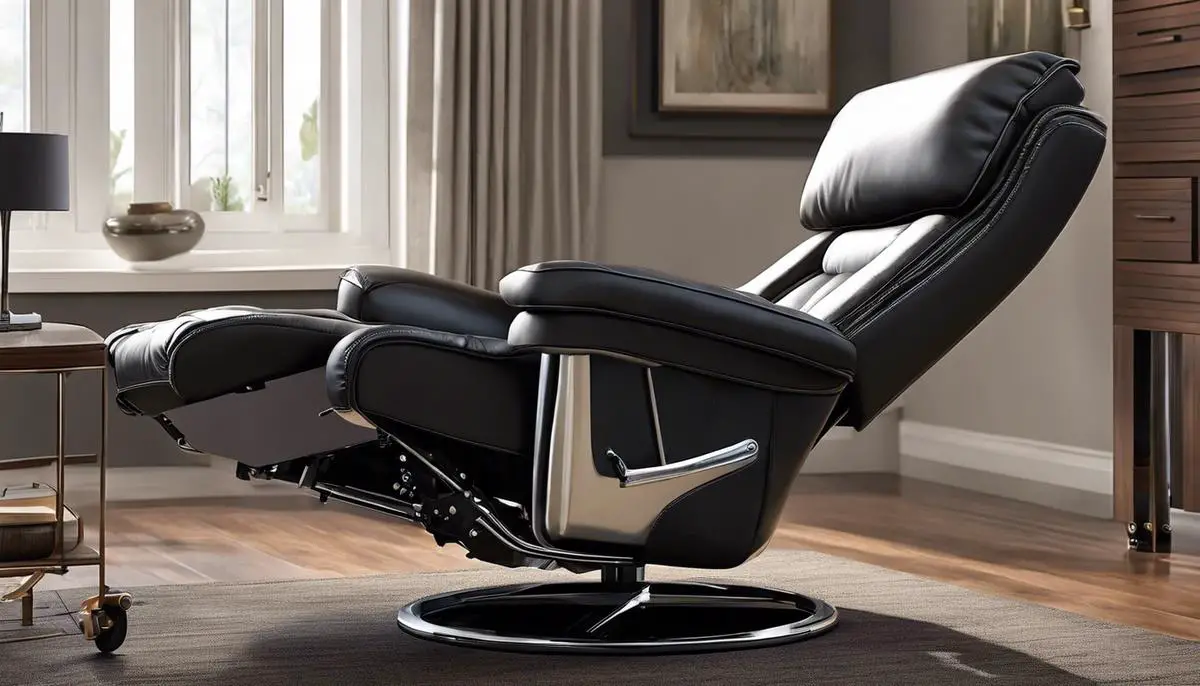In our homes, recliners provide the perfect respite. They are the epitome of comfort and relaxation after a long, tiring day. However, when the handle or lever of a recliner breaks or malfunctions, it can turn from a relaxation haven to a source of frustration. Fearing you may damage it even further, you simply don’t know what to do. But worry no more as we delve into the mechanics behind these comfortable pieces of furniture. In this guide, we will unlock the mysteries of the recliner, showing how to open it when the handle fails to work. We’ll delve into the frame, springs, and levers of a recliner while also educating on the proper manual manipulation techniques to open it safely.
Table of Contents
Understanding Recliner Mechanics
Essential Components and Functions of a Recliner
There’s something about a recliner that just wraps you in comfort, from head to toe. We all have that one pal- the trusty, cushy recliner that beckons warmly after a long day. This hobby, that’s right, the hobby of understanding and appreciating recliners, is so fascinating that losing oneself in its charms is no rarity.
Now, whether you’re a novice to the world of recliners or a seasoned connoisseur, it’s pivotal to understand the basic construction and functionality of these ingenious contraptions. It all comes together in one word: Comfort. This ultimate king of furniture, comes together through an amalgamation of several parts that work seamlessly, ensuring your comfort at every inch of your rest.
The Backbone: Frame
Akin to the human body, the frame serves as the backbone of the recliner. It ensures stability, durability and supports the entire chair. The frame is typically constructed from hardwood, steel, or plastic. A good frame means a long-lasting recliner, so, never underestimate the power of a strong frame.
The Cushioning: Padding
Padding is the cozy guardian that shields you ingeniously from the hard frame. It allots comfort to the recliner, making it your favorite lounging partner. Whether it be polyester, foam, or memory foam, a proper padding guarantees endless comfort and relaxation.
The Magic-Worker: Mechanism
Subtle yet crucial, the mechanism of the recliner is what makes it recline! Often footrests and backrests are controlled by this mechanism. For manual recliners, this would be the lever or button you pull to send the chair back into a reclining position. Power recliners have a motorized mechanism that is fully automated, enhancing ease of use.
The Comfort Amplifier: Footrest
Footrests are an essential component of the recliner that amplifies your leisure experience by providing a relaxed position for your feet. The footrest is closely linked to the reclining mechanism, since it extends when the chair reclines.
The Aesthetic Appeal: Upholstery
Now, the upholstery isn’t just there to look pretty. It’s the first line of comfort. It’s the fabric (leather, cotton, polyester, etc.) or material that covers the padding of your recliner. It’s crucial to choose one that appeals not just visually, but also contributes to the comfort and durability of the recliner.
The Hidden Essential: Springs
Springs contribute towards the ‘bounce’ of the recliner. They work hand-in-hand with the padding to provide that irresistible softness each time you plop down. Coil springs are often present in the seating area, offering a responsive, supportive seating experience.
The Additional Comfort: Headrest
Headrests allow you to tilt your head back comfortably, providing your neck and head with apt support when sitting or reclining in the chair. Adjustable ones enable personalized comfort based on everyone’s particular needs.
The Turnabout: Swivel
While not all recliners have it, the swivel component is a 360-degree rotating base that allows the chair to turn around easily. This feature enhances mobility and flexibility to meet your comfort requirements exactly.
Every individual part of a recliner plays a role in creating the irreplaceable comfort one experiences while lounging on it. This knowledge leaves you well-armed next time you choose a recliner, ensuring an informed decision suited exactly to your comfort needs. Because as all recliner hobbyists know, understanding your comfort throne isn’t just a hobby, it’s a lifestyle. But let’s not just end here, there’s so much more to recliners than just parts and functions! Happy exploring!

Manual Manipulation of Recliner
Title: Mastering the Art of Manually Manipulating Your Recliner to Open It
Even with the emergence of power recliners, manual recliners have retained their timeless appeal – an iconic and comforting piece of furniture that is not only a statement of style but a testament to the owner’s knack for relaxation. Once you understand the ins and outs of a recliner, operating it becomes a cinch. Here, we’ll delve into the exciting and somewhat mechanical world of your favorite chair and discuss how you can manually manipulate a recliner to open it.
Just picture it: You’ve just arrived home after a long day, and all you want is to plunge into your comfortable abode, your recliner. But oh no, it’s not cooperating. Not to worry, mastering the art of manually manipulating your recliner to open seamlessly is no Herculean task. It just asks for three simple steps – grip, lean, and relax.
-
Secure your Grip:
The first step is to find the lever or handle attached to the side of your recliner. Mind it, not all recliners open the same way. So, while some have lever-style handles, others may have circular knobs. Regardless of the shape, this component is your gateway to bliss and comfort. Firmly grip the said handle.
-
Lean with Purpose:
Once you’ve got a firm grip on the lever, gently lean your body backward. As you lean, simultaneously pull the lever upwards. This action prompts the footrest to elevate and the backrest to recline. Maintain a consistent and slow pace to prevent a sudden or jerky movement.
-
Relax and Enjoy:
As the footrest elevates and backrest lowers, release your grip from the handle gradually. You’ll notice the recliner remaining in its open state, inviting you to sit back, lift your legs onto the footrest, and relax into the welcoming embrace of your recliner.
Remember, the principle of manually manipulating a recliner to open essentially relies on the release of tension stored in the springs of the chair through the lever. If your recliner is reluctant to open, it may require a bit more investigation. An obstruction could be present, or the recliner might benefit from a bit of lubrication to ease its movements.
Becoming accomplished at the art of manually opening your recliner will not only enhance your comfort but also prolongs the life of your beloved possession. Moreover, it saves you extra pennies on repair or replacement due to improper use.
In conclusion, mastery over the nuances of recliner operation is an underappreciated skill that improves the entire reclining experience. So, next time you approach your recliner, remember the three magical steps – grip, lean, and relax, making your recliner experience as cozy as lounging on a cloud.

Photo by ganding87 on Unsplash
Safety Precautions when Opening a Recliner
Title: Safety Come First: How to Open a Handle-less Recliner Securely?
If you venture into the world of recliners, manually opening a recliner sans handle can seem like a daunting task. However, with an understanding of few safety measures, the task becomes remarkably straightforward. This article focuses on helping you understand the needful safety precautions that should be taken when attempting to open a recliner without a handle.
First and Essential: Clear the Area
Before you start to coerce the recliner into submission, it’s crucial to ensure you’re in a clear location. Any immediate objects, pets, or children should be kept at a safe distance – consider a minimum of 2-3 feet bubble around the recliner. This step ensures that there’s no possibility of accidentally knocking something over or – worse – causing injury when the chair swings back to a reclining position.
Use Proper Tools
In the absence of a handle, specific tools are necessary to pry open the footrest mechanically. It can include a flat head screwdriver or pliers. Always check the tools ahead of use for sharp edges or loose handles that could exacerbate the handling process or cause harm.
Positioning is Everything
Never stand directly in front of the reclining mechanism located on the side of the chair while trying to open it. Doing so places you at risk in case of sudden release of the footrest. Instead, stand to the side of the recliner to minimize hazards.
Use Steady Force
While using the tools, apply force slowly and steadily. Rapid and jerky movements may lead to sudden release of tension in the mechanism, leading to quick opening of the footrest. This can result in injury if not prepared.
Secure the Recliner
Once the recliner is open, ensure it is secure before use. Double-check that the footrest is locked in place and won’t unexpectedly collapse when weight is added.
In the absence of a handle, opening a recliner involves a few more steps and safety measures. Yet, with proper understanding, it’s never too much of a task. Following these safety precautions will ensure a safe and relaxing experience. While being safety aware, remember that thouroughness is key, focus on each step, ensuring each is done correctly, and you’re on your journey towards relaxation. Have a great reclining experience!

It’s evident that understanding the principles that govern the operation of a recliner can empower you to manipulate it manually when necessary, even when the handle is disengaged. By familiarizing yourself with the mechanical components of a recliner such as the frame, springs, and levers, you empower yourself to rectify any issues that may arise. Remember, safety is paramount. It’s just as important to be cautious in our actions, mindful of pressure points, exerting force delicately, and observing necessary safety protocols. This not only prevents damage to your recliner, but also saves you from potential injuries. Recliners are indeed wonders of comfort, and with these insights, you needn’t miss out on any more serene relaxation moments due to a faulty handle.

After sitting in a back breaking office chair for hours every day at his job, William Burch got the idea to start the Recliners Hunt website. William is focused on ergonomic chair design – as it is more important than ever today since we are spending more and more time sitting at our computers.


